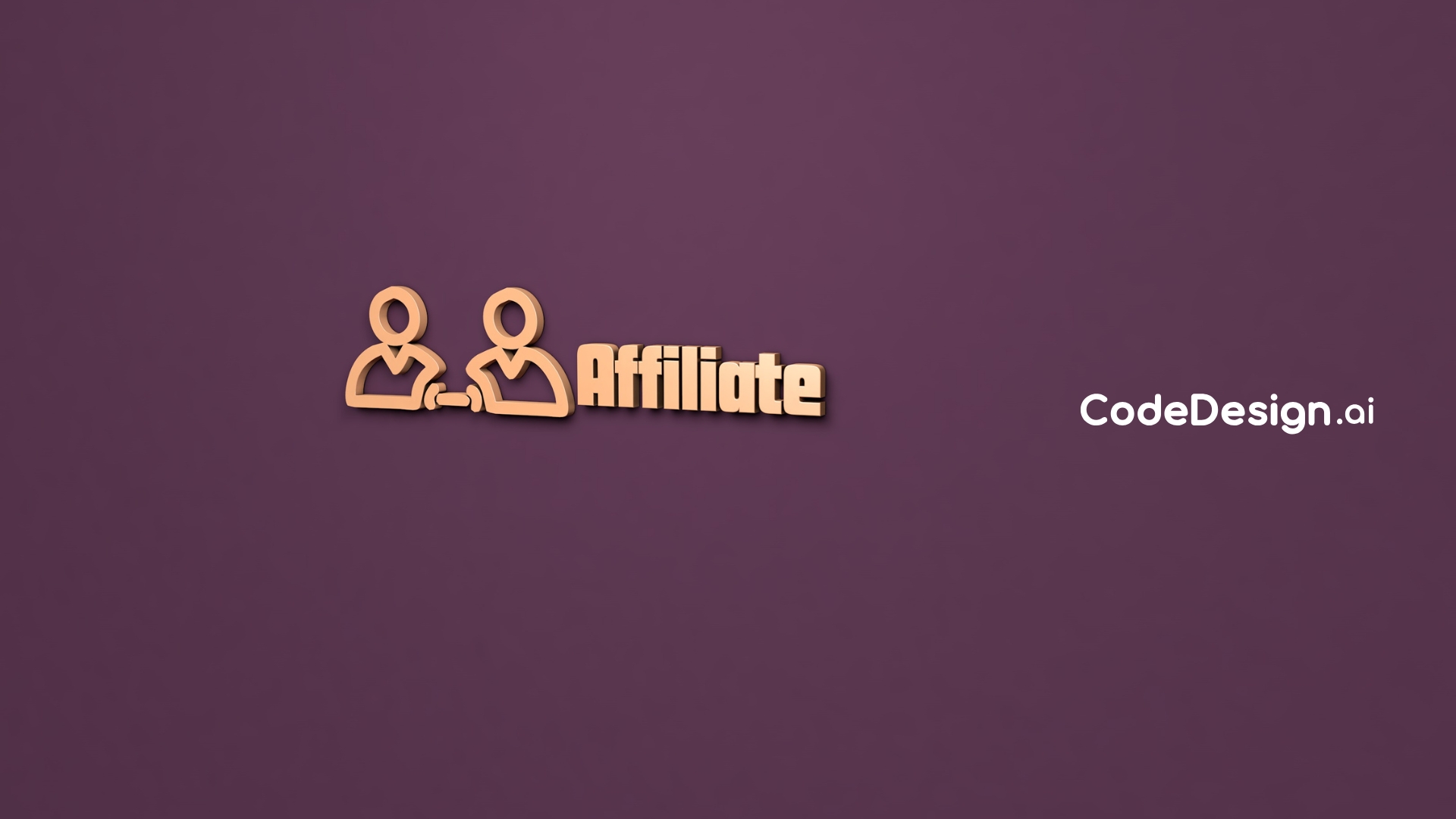If you’ve been wanting to start an affiliate marketing website but feel overwhelmed by coding or design, this guide is for you. With CodeDesign AI and WordPress hosting, you can build a professional site without being a tech pro. CodeDesign AI speeds up the website creation process with artificial intelligence, while WordPress hosting gives you a stable home for your site. Let’s go step by step and break this down.
Step 1: Understand What You’re Building
An affiliate marketing website is a site where you recommend products or services and earn a commission when people buy through your links. To succeed, your site needs three things: good content, easy navigation, and speed. You don’t need to reinvent the wheel. Focus on creating a website that looks professional and provides value.
Step 2: Use CodeDesign AI to Build Your Website
Instead of struggling with layouts or coding, you can use CodeDesign AI to design your site in minutes. You start by telling the tool what type of site you want, like “affiliate blog for software reviews” or “fitness gear product reviews.” The AI will then generate a website draft with pages, sections, and even placeholder content.
Lifetime deals for 1 website at $97
Get your lifetime access for $97 (50% off)
Key Features
AI-powered website design and development
SEO optimization tools integrated
E-commerce capabilities
Why We Recommend It
Simplifies the website creation process through AI
Ensures websites are SEO-friendly to enhance online visibility
Supports e-commerce functionality for online sales
Pros & Cons
- Quick setup and launch of websites
- Automated SEO features save time
- Integrates modern web technologies
- It may lack the flexibility of custom coding
- Dependence on AI could limit unique design choices
What makes this great is that you’re not staring at a blank page. You get a starting point you can customize. If you’re not happy with the first design, you can regenerate or tweak it until it feels right. Think of CodeDesign AI as your web designer who works instantly and costs way less.
Step 3: Choose WordPress Hosting
Your site needs hosting so it can live on the internet. WordPress hosting is one of the most reliable and affordable options. Companies like Hostinger, Bluehost, or SiteGround offer WordPress-optimized plans that make setup easy. Look for hosting that includes:
- One-click WordPress installation
- Free SSL certificate (to keep your site secure)
- Good speed and uptime (so your site loads fast)
Most hosting plans start at just a few dollars a month. It’s a small investment that gives your site stability and speed.
Here are the top 3 hosting that we recommend for your WordPress:
Starting from $1.99 per month
Key Features
Recommended by WordPress
One-click WordPress
Free domain name for the first year
Why We Recommend It
Storage and Bandwidth:
50 GB SSD storage
Unmetered bandwidth
Extras:
Free SSL certificate
Pros & Cons
- User-friendly for beginners
- Good customer support
- Renewal rates can be high
- Site migrations are not free
Starting from $2.49/month
Get Hostinger web-hosting from $2.49 /mo + extra months
Key Features
Extremely affordable
User-friendly control panel
LiteSpeed Cache for faster loading times
Why We Recommend It
Storage and Bandwidth:
30 GB SSD storage
100 GB bandwidth
Extras:
Free SSL certificate
Pros & Cons
- Low starting price
- Good performance for the price
- No free domain in the lowest-tier plan
- Support can be slow during peak times
$3.99/month
Key Features
WordPress-Optimized Hosting, including automatic updates, caching tools, and staging environments for development
Excellent Customer Support
Good Balance of Price and Performance
Why We Recommend It
A well-rounded option for WordPress websites seeking a balance between affordability, performance, and user-friendly features
Suitable for beginners and growing websites that don’t require the high-powered features of WP Engine
Pros & Cons
- Affordable pricing
- User-friendly interface with cPanel control panel
- Excellent customer support
- Shared hosting, meaning resource limitations compared to dedicated hosting
- Upsell attempts for additional services can be frequent
- Lacks the advanced security features compared to WP Engine
Step 4: Connect Your Domain
Every website needs a name, also called a domain (like yoursite.com). Most hosting providers let you buy a domain during checkout. If you already have one, you can connect it to your hosting with a few clicks. Having your own domain makes your affiliate site look credible and trustworthy.
Step 5: Customize Your WordPress Site
Once hosting is ready, log in to WordPress and connect your CodeDesign AI site. You can import the AI-generated design and adjust it inside WordPress. Add your logo, brand colors, and images. Create important pages like:
- Home Page – quick overview of your niche
- Blog Page – where your affiliate content lives
- About Page – who you are and why people should trust you
- Contact Page – a way for visitors to reach out
This step is all about making the site feel like yours.
Step 6: Write Affiliate Content
Your content is what drives traffic and sales. Start with blog posts that review products or explain how to solve a problem. For example, if your niche is tech, you might write posts like “Best Laptops for Students in 2025” or “Top VPNs for Online Privacy.”
When writing:
- Be honest about pros and cons
- Use your affiliate links naturally in the content
- Add comparison tables or visuals to make it easy to scan
The more helpful your content, the more likely people will trust your recommendations and click your links.
Step 7: Apply to Affiliate Programs
To make money, you need affiliate links. Sign up for affiliate programs that fit your niche. Popular options include:
- Amazon Associates
- ShareASale
- CJ Affiliate
- Individual brand programs
Once approved, you’ll get a unique link for each product. Add these links to your blog posts where relevant.
Step 8: Optimize for SEO
Search engine optimization (SEO) helps your site show up on Google. You don’t need to be an expert. Start with these basics:
- Use keywords in your titles and headings
- Write meta descriptions for each post
- Add alt text to images
- Use a plugin like Yoast SEO for WordPress
The goal is to make it easy for search engines to understand your content.
Step 9: Promote Your Website
Don’t wait for traffic to magically appear. Share your blog posts on social media, in Facebook groups, or on Pinterest. You can even repurpose your blog posts into short TikToks or YouTube videos to reach a wider audience. The more visibility you create, the faster your site grows.
Step 10: Track and Improve
Use free tools like Google Analytics to see where your visitors come from and what content performs best. Double down on posts that get traffic and update them regularly. Affiliate marketing is a long game. The key is to keep publishing and improving.
Final Thoughts
With CodeDesign AI and WordPress hosting, building an affiliate site is easier than ever. You don’t need to know how to code or hire a designer. All you need is consistency, valuable content, and the right affiliate programs. Start small, focus on one niche, and keep growing.





